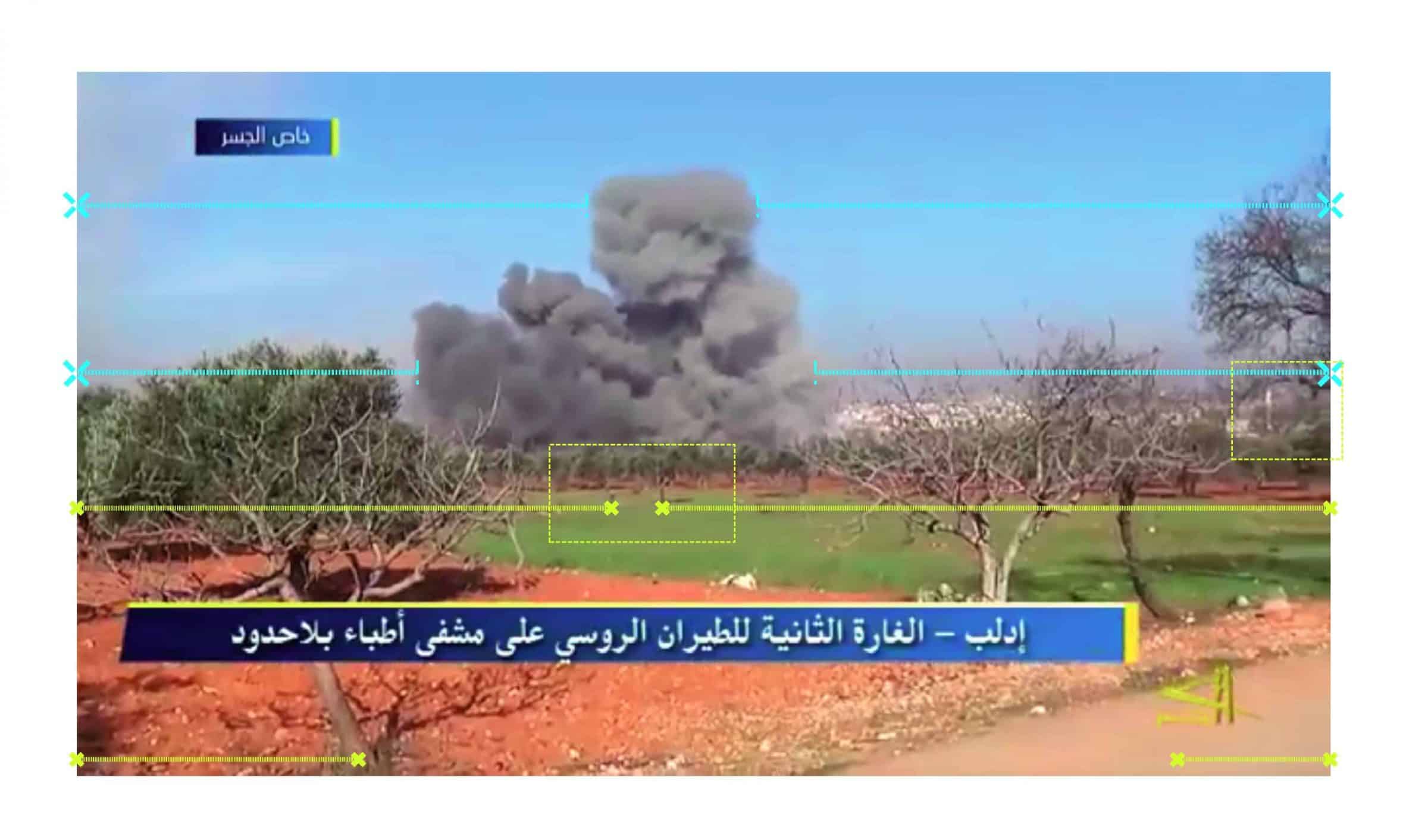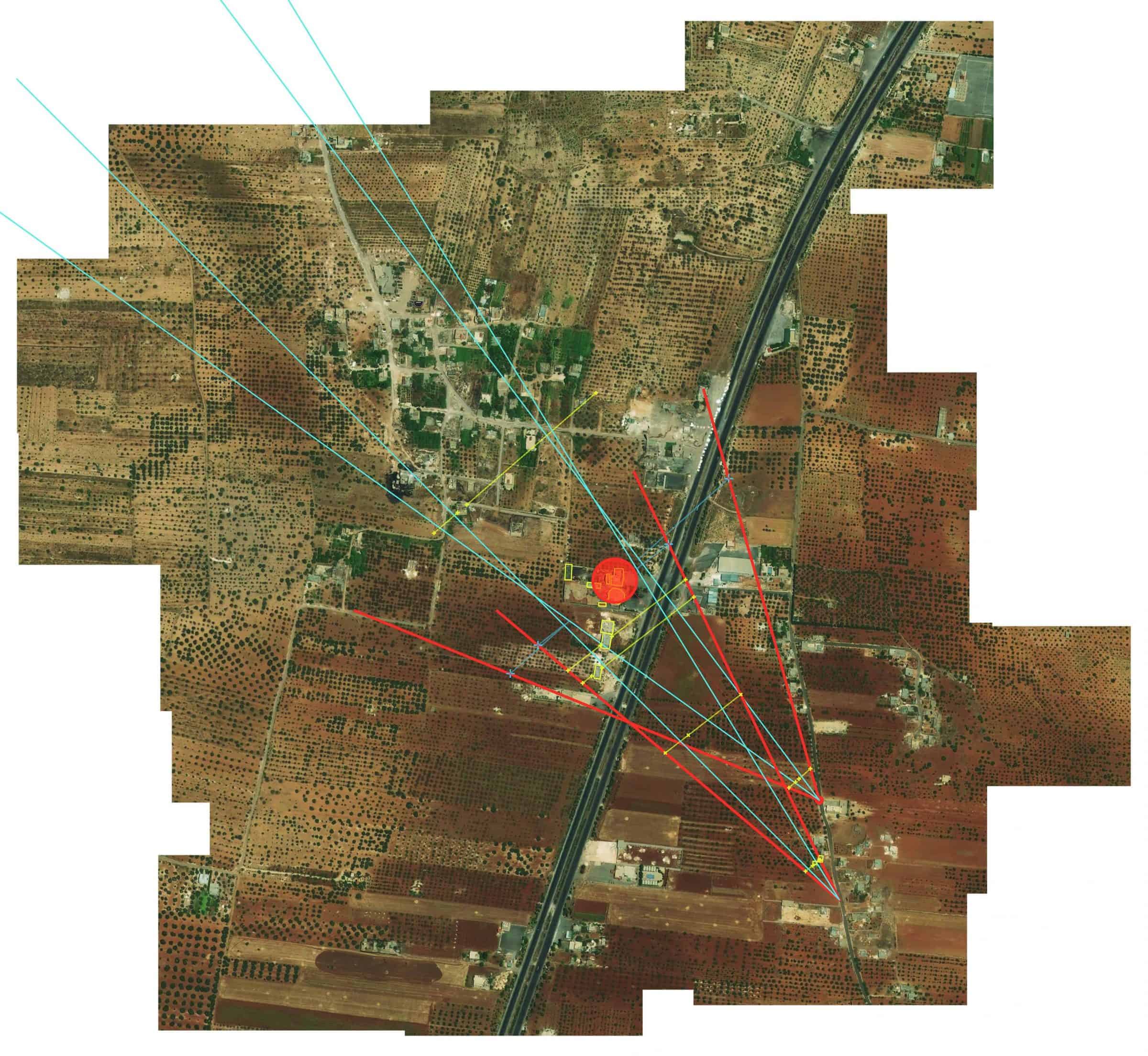Commissioned By
Additional Funding
Collaborators
Methodologies
Forums
On 15 February 2016, a hospital in al-Hamidiah, Idlib Province, Syria, was hit in two separate air strikes, two hours apart. The hospital was supported by the international charity Médicins Sans Frontières (MSF). Twenty-five people were reportedly killed, eleven were wounded, and the hospital was completely destroyed.
MSF commissioned Forensic Architecture (FA) to investigate the bombings, to look for clues as to the perpetrators of the attacks.
Around the time of the second strike in al-Hamidiah, a second hospital, in the nearby town of Ma’arat al-Numan, was also struck.
In the immediate aftermath of the attacks, MSF claimed publicly that the strikes were ‘very likely’ carried out by Russian or Syrian forces. Both governments denied the accusation, and Syria’s envoy to the UN referred to a ‘so-called MSF hospital’ that was ‘operating without permission’.

Our analysis concluded that the attack on the hospital in al-Hamidiah was likely carried out by Russian aircraft, while the subsequent attack in Ma’arat al-Numan was more likely to have been carried out by the Syrian regime. Both attacks continued a coordinated strategy by the Syrian regime and its allies to systematically target medical facilities in rebel-held areas.
Methodology
Methodology
FA was faced two challenges in organising and analysing video footage of the attack. Russian and Syrian aircraft carried out strikes on multiple medical facilities in the area of Ma’arat al-Numan on that day. However, media attention focused primarily on the attack in al-Hamidiah, with the result that footage of other, separate attacks came to be understood as footage of the ‘attack on an MSF hospital’.
In order to determine which material captured which attack, FA cross-referenced testimony provided by MSF from people on the ground who had witnessed the attack first hand, as well as publicly available testimony from the Free Syrian Army Observatory against spatial and temporal details found in the videos.
These methods included image triangulation to locate the scene, shadow analysis to corroborate the time of recording, and observing clues as to the characteristics of the fighter planes involved. In doing so, it was possible to produce a clear timeline and map of the different attacks that occurred that day.
